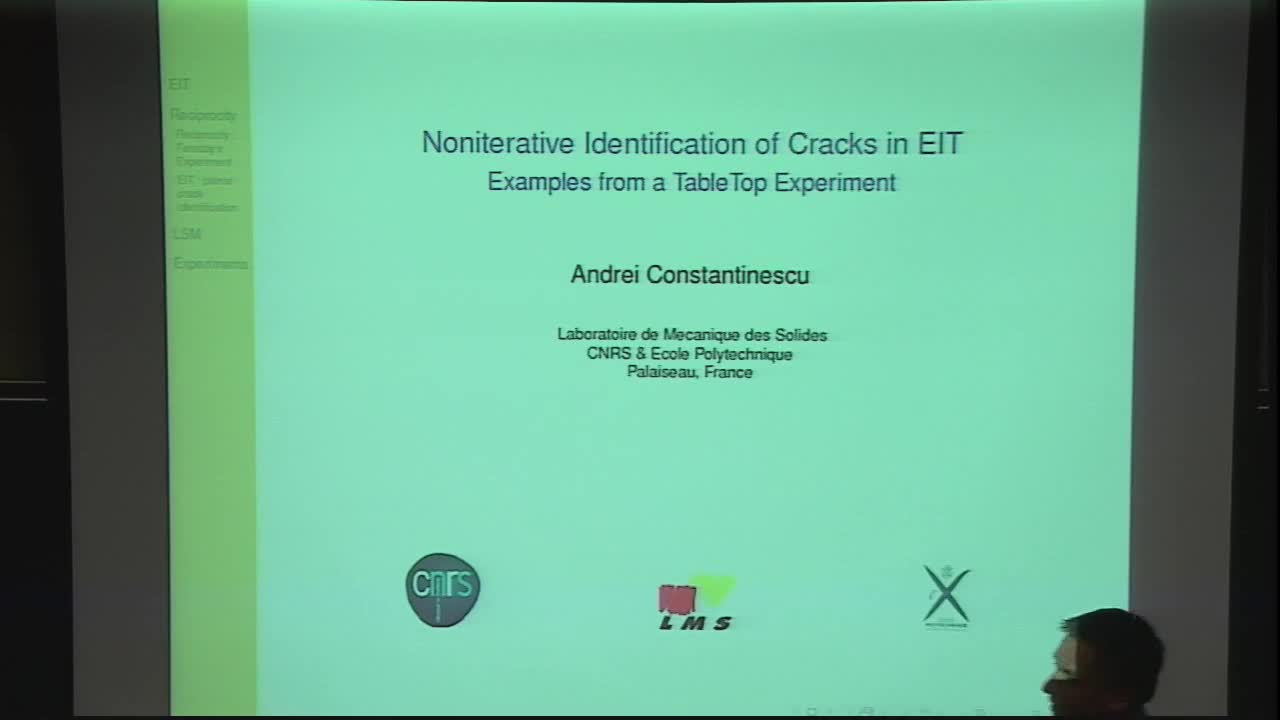Non-iterative Identification of Cracks in EIT: Examples from a Table-Top Experiment
Presenter
May 13, 2015
Keywords:
- Iterative methods; linear systems
MSC:
- 65F10
Abstract
Electrical impedance tomography (EIT) is an imaging technique for the reconstruction of objects embedded in a given conductive background medium . Applications range over a broad spectrum such as non-destructive material testing, geophysics landslide identification or tumor detection inmedical imaging.
In such situations, linearization techniques are often too restrictive, either in the context of physical configurations they can accommodate or the information they can provide. Moreover, the minimization-based approaches that exploit the data through amisfit cost function and have a potential of overcoming the latter restrictions unfortunately bear significant computational cost associated with repeated solutions to the forward problem. Traditional gradient-based optimization is a computationally reasonable alternative for solving the featured class of inverse problems, however, their performance depends on choosing adequately the initial guess (location, geometry, conductivity) of the hidden objects.
In this presentation we shall present a simple table-top EIT experiment and discuss several of identification problems applying either reciprocity gap technique or linear sampling method to reconstruct the unknown conductivities.
References:
Bellis et al. Inverse Problems 28 (2012) 075015 (25pp) doi:10.1088/0266-5611/28/7/075015
Andrieux, S, et al. , chapter
Reciprocity gap, in Full-Field Measurements and Identification in Solid Mechanics, editors M.Grediac et F. Hild, Wiley, 2012
